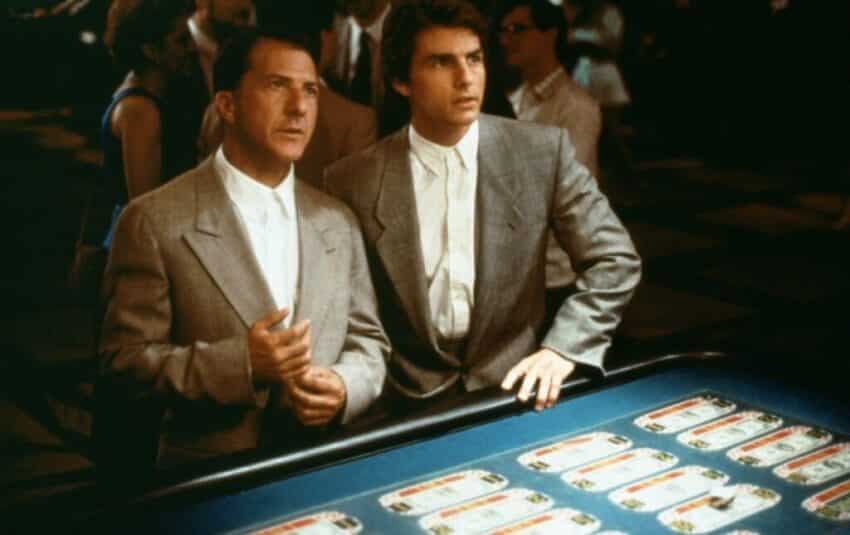Mit Professor Blackjack
- Mit Professor Blackjack Vs
- Mit Professor Blackjack Free
- Mit Professor Blackjack Training
- Mit Professor Blackjack App
- Mit Professor Blackjack Online
- Impressed by his impeccable mind and test scores, the professor invites him to be a part of the Blackjack team. The MIT Blackjack team, with the help of card-counting and signalling techniques, wins all the games at Las Vegas, and earns whopping amounts of cash which attracts Ben to a luxurious and glamorous lifestyle.
- Bloch was an MIT student, earned a law degree, and then turned to poker to earn a living. He says his largest individual win at blackjack was $100,000. The Reptiles were led by Mike Aponte, Manlio Lopez and Wes Atamian. Aponte convinced Jeff Ma (who inspired the lead character Ben Campbell in “21”) to play on his team of card counters.
- As a young man, Ed Thorp was a mathematician doing pretty much what you'd expect a mathematician to do: teaching, studying, trying to solve hard problems. There was one particular problem that.
The Professor of Blackjack Dr. Edward O. Thorp

Dr. Edward O. Thorp is an American hedge fund manager who began his career as a professor of mathematics at MIT. In between those two endeavors he visited Las Vegas, played some blackjack, became enamored of the game’s continually changing house edge and wrote the most famous book on gambling ever which he titled Beat the Dealer.
The Professor of Blackjack was born in Chicago, Illinois August 14, 1932. His childhood did not reflect a future of gambling (at casino games or the stock market), but he was continually intrigued by the precision and definitive nature of mathematics and physics. His interests led to a BA in Physics from UCLA in 1953, an MA in Physics from UCLA in 1955 and finally a PhD in Mathematics from UCLA in 1958.
He was hired as a professor at MIT, but missed the West Coast and was fascinated by casino games and game theory, and took several vacations with friend Claude Shannon and Claude’s wife Betty. Not surprisingly, the numbers attached to a spinning roulette wheel were quite a draw, and he and Claude invented a small computer for advantage play at the game. Betty would wear the device and use his mathematical formula to try and take advantage of anomalies in the spin pattern of different dealers and wheels.
Mit Professor Blackjack Vs
Edward Thorp, a professor at MIT began developing a formula for winning at blackjack in 1958. After months of research and analysis, he came up with the famous card counting technique. The world soon spread and MIT formed its legendary blackjack team that we all know today.

Along the way, Thorp’s overall forays into the casinos of Las Vegas were successful. However, the mathematics of blackjack was also alluring to Thorp and he learned Fortran so he could program equations into a huge IBM 704 computer to define a specific strategy based on game theory related to the changing nature of the odds due to cards put into play. He was influenced by a paper presented by fellow mathematician Roger Baldwin on the same subject in 1956, but wanted to take his ideas to a new level. His new overall theory was related to the Kelly criterion, a wagering system he later applied to the stock market that matched bet-size to player advantage.
Mit Professor Blackjack Free
With his initial research finished, Thorp wrote a paper he titled A Favorable Strategy for Twenty-One in November of 1960. His fellow MIT professor, Dr. Shannon, suggested a name change to Fortune’s Formula: A Winning Strategy for Blackjack. The name stuck. The paper suggested that there was a specific way to play each hand of blackjack, based on the dealer’s up card – a basic strategy for winning. He also theorized a system to determine when the house odds changed and became player odds (or an actual player advantage).
Hitting the Casinos
His theories were so masterful that Thorp convinced Manny Kimmel, a local professional gambler, to provide him with a $10,000 bankroll to prove his system could be both practical and successful in real casino action. Instead of playing in Las Vegas, Thorp started in the casinos of Reno and Lake Tahoe where he initially won enough to convince Kimmel this might be a goldmine.
Repeated trips to both Reno and Las Vegas were filled with the good and bad of gambling. Unfortunately, even with a 1% edge there are huge swings at blackjack and Thorp had many ups and downs, but an $11,000 win over a single weekend was enough to keep him playing. And, it kept Pit Bosses watching him very carefully.
Before Thorp and the advent of basic strategy, most players were at a much larger disadvantage to the house, probably closer to 5%. To have a player who seemed to be so much better at the game was unnerving for the casinos, and they had no problem just telling him he couldn’t play anymore. He pondered his future while moving to New Mexico where he was a professor of mathematics from 1961 to 1965.
Thorp refined his strategy and detailed his Las Vegas casino exploits and explained the use of a mathematical card counting system in his book, Beat the Dealer. It was only marginally successful until a series of magazine and newspaper articles detailed the story of the college professor with a winning formula for playing blackjack and beating the casinos.

Las Vegas, in typical knee-jerk reaction to the thought of losing any money, changed the rules of the game to make it harder for the coming wave of skilled players they were sure was coming. Those rules included: no splitting of aces, shuffling the deck early, and restricting double down hands.


Mit Professor Blackjack Training
The public hated the rule changes, and even though Thorp’s book became a National Best Seller, it turned-out that very few players had the ability, patience, or bankroll to implement Thorp’s card counting system. In fact, after the casinos relented and eased-up on the rule changes, tens of thousands of new blackjack players did indeed come to Las Vegas, Reno and Lake Tahoe to try their luck. Most lost.
System Revised and the Real Boom in Blackjack Play
Mit Professor Blackjack App
Thorp, however, continued to win, but found he was often shuffled-up or asked to leave, so he took to playing in disguise. With the help of Julian Braun, an easier count system was developed and included in the 1966 updated and revised edition of Beat the Dealer. Every subsequent blackjack book and system is based on the initial work of Thorp and Braun
Thorp continued to play casino blackjack after moving to the University of California at Irvine where he also taught mathematics from 1965 to 1982. He also contributed articles and ideas to a growing group of professional blackjack players and blackjack teams. However, his main focus outside the university was a growing interest in the stock market.
His first hedge fund, the market neutral Princeton/Newport Partners was started in 1969 with partner Jay Regan. Thirty years later Thorp reported that his own personal investments using his system of exploiting pricing anomalies in the securities markets as well as quantitate finance with stocks had yielded a 20% annual rate of return.
Mit Professor Blackjack Online
Dr. Thorp has written several books on his theories for beating the stock market using what were then new ideas, with names like Option Arbitrage, Convertible Arbitrage, Index Arbitrage and Statistical Arbitrage.
Without the book Beat the Dealer and Thorp’s Simple Point-Count System and Complete Point-Count System, upcoming blackjack players like Lawrence Revere and Kenny Uston would never have achieved the success and notoriety they did – by beating the casinos, and publishing their own books.